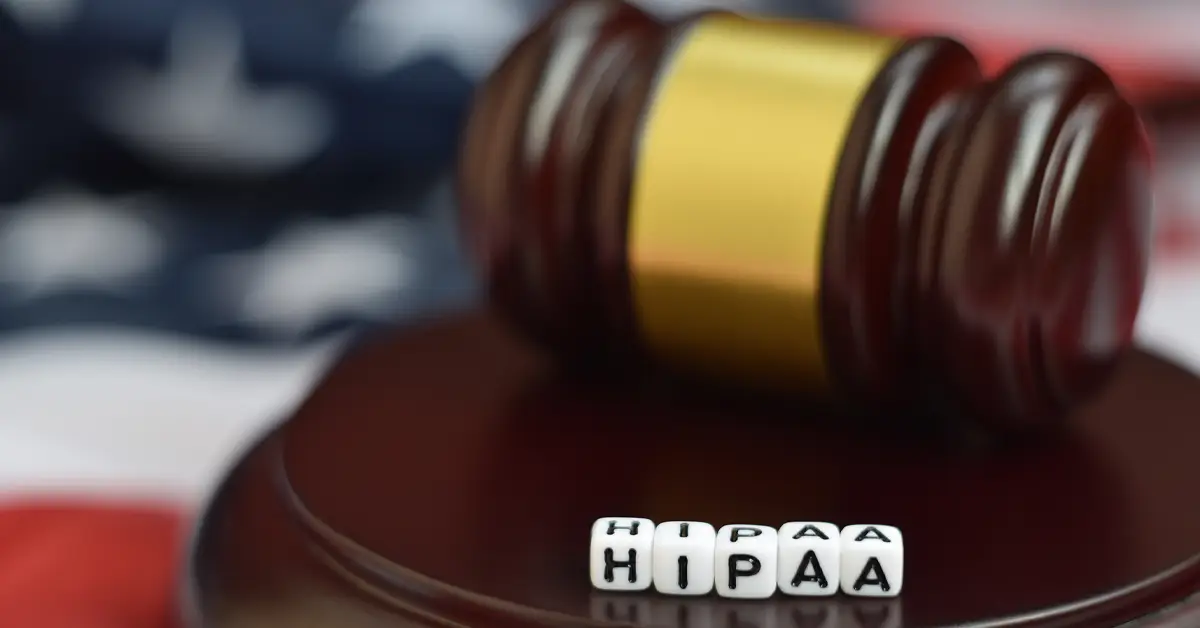The Health Insurance Portability and Accountability Act (HIPAA) requires healthcare organizations, including doctors, to maintain the privacy and security of patient data. A practical HIPAA compliance checklist is essential to ensure compliance with HIPAA regulations. This guide provides information on how to create a comprehensive checklist and tips for successfully implementing it at your practice.
Creating a HIPAA compliance checklist involves ensuring proper safeguards for protecting confidential medical records and other protected health information (PHI). This includes data encryption protocols, authentication processes for accessing patient records, establishing employee guidelines for handling PHI, conducting assessments on IT systems that store sensitive information, and developing procedures for responding to potential privacy breaches.
What Is HIPAA Compliance?
HIPAA was created in 1996 to protect the privacy of patient records and health information. This law sets forth standards for safeguarding, using, and disclosing PHI. HIPAA compliance is an essential regulatory requirement for all healthcare providers, including doctors. Doctors must understand HIPAA regulations to ensure they are compliant with these laws.
Under HIPAA, medical practitioners must take steps to safeguard PHI from unauthorized access or disclosure. This includes implementing administrative, physical, and technical safeguards, and providing staff training on security protocols. Additionally, they must develop policies and procedures governing the use of PHI, such as sending encrypted emails with patient information, or using secure online portals for communication with patients. Lastly, doctors should review legal documents, such as Business Associate Agreements, before signing them to ensure they comply with HIPAA requirements.
Who Needs to Be HIPAA-Compliant?
Compliance with HIPAA regulations is mandatory for all organizations that handle patient information, including healthcare providers, health insurance companies, and pharmacies. The regulations require these organizations to take steps to ensure the privacy and security of patient data. As a healthcare provider or business associate, you need to be HIPAA-compliant.
The HIPAA Security Rule requires covered entities and business associates to implement security measures that protect the privacy of electronic health information or electronic health records. These security measures must be appropriate for the size and complexity of your organization and must be tailored to their specific needs.
What Are the Three Types of Safeguards for HIPAA Compliance?
There are three main types of safeguards that medical offices need to implement in order to be compliant with HIPAA: administrative, physical, and technical.
Administrative Safeguards
Administrative safeguards are measures used to enforce the privacy of the health information of the covered entity by those responsible for the HIPAA compliance. This includes things like employee training, policies and procedures. Administrative safeguards are actions, policies, and processes taken on an administrative level to control the development, implementation, and maintenance of security measures to protect ePHI and the covered entity’s workforce behavior concerning the protection of that data. They decide on documentation procedures, job descriptions, employee training needs, data maintenance guidelines, and more. Administrative safeguards guarantee that the technological and physical safeguards are applied correctly and consistently.
Physical Safeguards
Physical safeguards are measures used to protect health information in physical form. Things like secure storage facilities and restricted access to records are examples of physical safeguards to protected health information. HIPAA Covered Entities and Business Associates like a Covered Entity’s electronic information systems, electronic health records, and health information technology, along with facility access controls and equipment, are part of these safeguards. They are protected by physical safeguards which also include policies and procedures, from environmental and natural risks as well as unlawful entry. Door and window locks, security cameras, server, and computer locations, and security systems are also considered some of the physical safeguards. They even cover mobile device rules and the removal of hardware and software from specific sites.
Technical Safeguards
Technical safeguards are measures that are used to protect electronic health information. This includes protected health information, password protection, and data encryption. Technical safeguards refer to the technology and the rules and practices that secure and restrict access to electronic health information. To protect its ePHI, each covered entity must decide which technical safeguards and measures are required and suitable for the organization.
What Is A HIPAA Risk Assessment?
A HIPAA Risk Assessment is an essential step in ensuring the safety and security of patient data. The assessment identifies potential risks posed by information technology systems and processes, helping healthcare organizations make informed decisions about protecting patient data. For healthcare providers, a HIPAA Risk Assessment provides valuable insight into their organization’s adherence to HIPAA regulations.
What Does A HIPAA Risk Assessment Consist Of?
A HIPAA risk assessment is integral to achieving HIPAA compliance, but what does it consist of? Compliance means adhering to the regulations set forth by HIPAA, which is subject to HIPAA laws and regulations for the privacy and security of patients’ protected health information. The risk assessment aims to identify potential vulnerabilities that could lead to a data breach. Once these vulnerabilities have been identified, the organization can develop a plan to address them and ensure that the organization is fully HIPAA compliant.
According to HIPAA Journal, HHS does offer advice on what should be included in a HIPAA risk assessment:
- Identify the PHI your organization creates, receives, stores, and transmits – including PHI shared with consultants, vendors, and Business Associates.
- Identify the human, natural, and environmental threats to the integrity of PHI – human threats, including intentional and unintentional.
- Assess what measures are in place to protect against threats to the integrity of PHI and the likelihood of a “reasonably anticipated” breach occurring.
- Determine the potential impact of a PHI breach and assign each potential occurrence a risk level based on the average of the given likelihood and impact levels.
- Document the findings and implement measures, procedures, and policies necessary to tick the boxes on the HIPAA compliance checklist and ensure HIPAA compliance.
- The HIPAA risk assessment, the rationale for the measures, procedures, and policies subsequently implemented, and all policy documents must be retained for a minimum of six years.
What Is the HIPAA Privacy Rule Checklist?
What goes into making a HIPAA compliance checklist? Well, the first step is to understand the HIPAA Privacy Rule. This is a regulation that sets national standards for protecting the privacy of patients’ health information. The HIPAA Privacy Rule Checklist is a comprehensive guide to help ensure that the business complies with the HIPAA.
The Privacy Rule covers many healthcare providers, including doctors, dentists, pharmacies, and health insurance companies. It also applies to Business Associates—third-party companies that provide services to healthcare providers, such as billing or IT services.
Medical records and other identifiable health information (collectively referred to as PHI) of persons are protected under the HIPAA Privacy Rule. The Rule limits the uses and disclosures of such information – which can include oral, written, or electronic information – without a person’s consent, and mandates adopting appropriate protections to preserve PHI privacy.
The HIPAA Privacy Rule Checklist can help to protect the privacy of your patient’s health information. According to HIPAA Journal, the following may be considered a starting point for your HIPAA Privacy Rule checklist.
Step 1.
Designate a HIPAA Privacy Officer responsible for developing, implementing, and enforcing HIPAA-compliant policies.
Step 2.
Understand what PHI is, how it can be used and disclosed in compliance with HIPAA, and when an individual’s authorization is required.
Step 3.
Identify PHI’s privacy risks and implement safeguards to minimize risks to a “reasonable and appropriate” level.
Step 4.
Develop policies and procedures for using and disclosing PHI in compliance with HIPAA and for preventing HIPAA violations.
Step 5.
Develop policies and procedures for obtaining authorizations and allowing individuals to agree or object when required.
Step 6.
Develop and distribute a Notice of Privacy Practices explaining how the organization uses and discloses PHI and outlines individuals’ rights.
Step 7.
Develop policies and procedures for managing patient access requests (to their PHI), correction requests, and data transfer requests.
Step 8.
Develop procedures for workforce members to report HIPAA violations and for the organization to fulfill its breach notification requirements.
Step 9.
Train workforce members on the policies and procedures relevant to their roles and on general HIPAA compliance.
Step 10.
Develop and distribute a policy outlining the sanctions for non-compliance with the organization’s HIPAA policies.
Step 11.
Perform due diligence on Business Associates, review existing Business Associate Agreements, and revise as necessary.
Step 12.
Develop and document a contingency plan for responding to an emergency that damages systems or the physical location in which PHI is maintained.
What is the HIPAA Security Requirements Checklist?
The Security Requirements Checklist on HIPAA Rules is a comprehensive guide to ensuring that business complies with HIPAA regulations. It covers everything from security risk assessment to workforce training. The Security Requirements Checklist is a must-read if you want to ensure that the business is HIPAA compliant. Though it may seem redundant with the HIPPA Privacy Rule Checklist, this checklist is specifically focusing on security (which, of course, facilitates the protection of privacy). It will help identify and remediate any potential security vulnerabilities in the system, like security incidents. These twelve key elements of security standards on the HIPAA checklist were created based on HIPAA Journal:
Step 1.
Designate a HIPAA Security Officer. The role can be assigned to the HIPAA Privacy Officer, but it is best to designate it to an IT team member in larger organizations.
Step 2.
Determine which systems create, receive, maintain, or transmit ePHI and protect them from unauthorized access from other parts of the organization’s IT infrastructure.
Step 3.
Implement measures that mitigate the threats from malware, ransomware, and phishing. For example, advanced email and Internet filters with malicious URL detection capabilities.
Step 4.
Establish which workforce members should have access to ePHI and implement Role-Based Access Controls to prevent users from accessing more ePHI than they are supposed to.
Step 5.
Implement a system for verifying the identity of workforce members to comply with the physical access, workstation security, and event logging requirements of the Security Rule.
Step 6.
Conduct an inventory of devices used to access ePHI and the media on which it is stored. Ensure a system is in place to record any movement of devices and media.
Step 7.
Ensure all devices that access ePHI – including remote and personal devices – is PIN-locked and have automatic logoff capabilities activated to prevent unauthorized access.
Step 8.
Establish processes for authorized workforce members to report security incidents or escalate security concerns to the Security Officer or Security Operations Center.
Step 9.
Implement a security awareness training program for all workforce members that incorporates how to escalate security concerns and incident reporting procedures.
Step 10.
Develop a sanctions policy explaining the sanctions for violating the organization’s security policies and distribute it among all workforce members (even those without access to ePHI).
Step 11.
Develop a contingency plan for foreseeable events that may threaten the confidentiality, integrity, and availability of ePHI, and test the plan against each type of event.
Step 12.
Review existing Business Associate Agreements relating to disclosures of ePHI and replace any that fail to comply with the Organizational Requirements of Security Rule of HIPAA.
What Is the HIPAA Breach Notification Rule?
Under the HIPAA Breach Notification Rule, healthcare providers must notify patients and the Department of Health and Human Services (HHS) if their PHI is compromised. HIPAA Breach Notification Rule could include data breaches or a breach of data, such as the theft of a laptop that contains patient information.
As a healthcare provider, it is crucial to understand the HIPAA Breach Notification Rule and how to comply with it. Here is a complete guide to the HIPAA Breach Notification Rule.
According to HIPAA Journal, to ensure that data breaches or any breach are reportable, companies should first conduct a risk assessment or use a HIPAA breach decision tool/HIPAA breach risk assessment form to:
- Was ePHI encrypted and therefore unreadable, undecipherable, and unusable?
- If not, what health information and identifiers were exposed in the breach?
- Who (if known) acquired, accessed, or viewed PHI/ePHI impermissibly?
- What is the likelihood of the data will be further used or disclosed?
- What measures are in place to mitigate the effect of the breach?
HIPAA Compliance for Information Technology (IT)
Some people mistakenly believe that implementing the Safeguards of the Security Rule is all that is necessary for HIPAA IT compliance. However, this is frequently untrue. For an IT professional, it’s essential to understand HIPAA compliance and how to implement it into your systems for an IT compliance audit. IT departments may be responsible for deciding what information is kept in a designated record set, what happens to the information that is excluded from the designated record set, how information gathered orally or on paper is being added to the assigned record set, and how the procedure for accounting of disclosures is managed – all Privacy Rule issues.
What Are the Additional Requirements of HIPAA For IT?
There are a few additional requirements that HIPAA imposes on IT professionals. One is that managers must complete annual and following HIPAA training. Another is that they must implement technical safeguards to protect patient data. These safeguards include firewalls, intrusion detection systems, and secure data encryption.
Additionally, IT professionals must conduct regular risk assessments to identify potential security threats and vulnerabilities and privacy and security rules. They must also develop and implement policies and procedures to address identified risks. Following these guidelines ensures that your business will comply with HIPAA regulations and avoids HIPAA penalties and violations.
What Is the HIPAA Compliance Checklist For IT?
The HIPAA compliance checklist for IT is a comprehensive set of guidelines that help organizations ensure that their technology infrastructure complies with the HIPAA Security Rule. The checklist includes risk assessment, security management, and access control. It is essential for companies in the healthcare industry to have a thorough understanding of HIPAA-related compliance, such as with a checklist to assist in protecting patient data and avoid violations or costly fines. HIPAA violations can occur due to a lack of proper HIPAA compliance resources, an inadequate compliance plan, or poorly implemented compliance policies.
This guide will show you the steps to ensure your IT infrastructure complies with HIPAA. If you want to ensure that your organization is HIPAA-compliant, you must ensure that your IT infrastructure meets the requirements outlined in the HIPAA Security Rule. The HIPAA compliance audit checklist for IT can help you do just that. The following is a summary of the HIPAA Compliance Checklist for IT.
Step 1.
Understand which international, federal, and state laws your organization must comply with, and develop policies and procedures accordingly.
Step 2.
Enforce a password policy that requires using unique, complex passwords for each account and support the policy with mandatory MFA when practical.
Step 3.
Automate monitoring and reporting as much as possible to reduce the administrative burden of user compliance and threat management.
Step 4.
Test incident response and disaster recovery plans for every conceivable event. Ensure all team members understand their roles during such events.
Step 5.
Separate the infrastructure into a data later and system layer to support the system’s integrity and isolate attacks on the system.
Step 6.
Implement encoding or blockchain technologies to prevent tampering and support compliance efforts to ensure the integrity of ePHI.
Step 7.
Prepare for the possibility that account credentials may be compromised and have processes ready to shut down compromised accounts remotely.
Step 8.
Map data flows – including those to/from Business Associates – to simplify risk assessments and analyses and more efficiently identify threats to ePHI.
Step 9.
Don’t assume all users have the same knowledge, awareness, or susceptibility level. Identify where user weaknesses exist to build stronger defenses against cyberattacks.
Step 10.
Connect with third-party compliance experts to complete a HIPAA IT compliance checklist. You cannot leave security to chance!
Revolutionizing Healthcare: HIPAA-Compliant DrKumo Remote Patient Monitoring Solutions
DrKumo is a technology leader in remote patient monitoring, providing highly scalable and real-time solutions for chronic disease management, acute care, post-operation, and hospital care at home. A user-friendly, HIPAA-compliant, mobile-enabled technology and AI/ML engine empower individuals to manage their home health conditions while providing healthcare providers with real-time intelligence for timely intervention.
DrKumo RPM technology is designed to solve the most painful problems in healthcare, ensuring that patients receive the best possible care and support. Whether an individual is a healthcare provider looking to improve patient outcomes or a patient looking to manage a chronic condition, the technology is here to help. With the state-of-the-art, real-time monitoring and AI/ML engine, anyone can rest assured that they are receiving the most effective and efficient care possible. The goal is to improve the lives of patients and healthcare providers alike, and DrKumo is committed to making that happen through innovative, technology-driven solutions. DrKumo is proud to be at the forefront of healthcare technology, delivering the highest quality care to patients everywhere.
Takeaways
It is important for healthcare professionals to thoroughly understand HIPAA technical requirements to ensure that they are properly protecting the privacy of their patients’ medical information. Developing a healthcare delivery system that encompasses patient data protection and that guarantees that patients’ sensitive data is kept private, choose a security compliance focused and HIPAA-compliant RPM provider like DrKumo RPM technology solutions. Not only will you be protecting your patient’s data, but you’ll also be protecting yourself from legal action by avoiding HIPPA violations. Much work goes into achieving HIPAA compliance, but it’s ultimately worth it!
To give you more information about DrKumo HIPAA-compliant RPM Technology Solutions, talk to us now!








